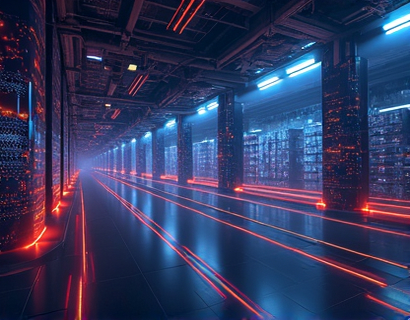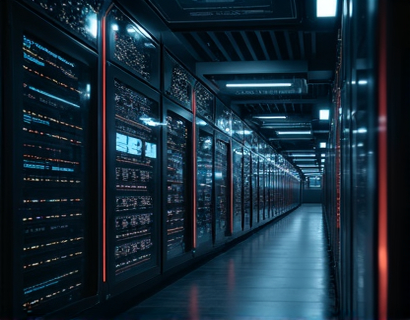Optimize Your Aquaculture Business with Specialized Software for Enhanced Productivity and Resource Management
In the rapidly evolving landscape of aquaculture, business owners and managers face numerous challenges that can impact the success and sustainability of their operations. From managing complex biological systems to optimizing resource use and ensuring compliance with regulatory standards, the demands on aquaculture businesses are significant. Specialized software has emerged as a transformative tool, offering a comprehensive solution to streamline operations, enhance productivity, and optimize resource management. This article delves into the ways in which advanced software solutions can revolutionize aquaculture business management, providing essential tools for owners and managers to succeed and thrive in a competitive market.
Streamlining Operations
One of the primary benefits of specialized software in aquaculture is the ability to streamline operations. Traditional methods of managing aquaculture facilities often involve manual record-keeping, manual data entry, and fragmented systems that can lead to inefficiencies and errors. Specialized software integrates various aspects of the business into a single, cohesive platform. This integration allows for real-time data access, automated workflows, and seamless communication between different departments and stakeholders.
For instance, software can automate tasks such as feeding schedules, water quality monitoring, and equipment maintenance. By automating these tasks, staff can focus on more strategic activities that drive business growth. The automation of routine tasks not only saves time but also reduces the risk of human error, ensuring that critical operations are performed consistently and accurately.
Enhancing Productivity
Enhanced productivity is a direct result of streamlined operations, but specialized software goes beyond just efficiency. It provides tools and insights that can significantly boost overall productivity. One key feature is the ability to analyze data in real-time. With access to comprehensive and up-to-date information, managers can make informed decisions quickly. For example, real-time monitoring of water parameters such as temperature, pH, and dissolved oxygen levels allows for immediate adjustments to maintain optimal conditions for fish growth.
Additionally, software can track and analyze performance metrics across various aspects of the business, from feed conversion ratios to growth rates. These insights enable managers to identify bottlenecks and areas for improvement, leading to continuous optimization. By leveraging data-driven insights, aquaculture businesses can enhance their productivity and achieve higher output with the same or fewer resources.
Optimizing Resource Use
Resource optimization is crucial for the sustainability and profitability of aquaculture operations. Specialized software helps in managing resources more effectively by providing detailed reports and analytics. For example, water usage can be monitored and optimized to minimize waste. The software can track water intake, usage, and recycling, ensuring that water resources are used efficiently. This is particularly important in regions where water scarcity is a concern.
Feed management is another critical area where software can make a significant impact. By tracking feed consumption and converting it into growth data, the software can help determine the optimal feed-to-growth ratio. This not only reduces feed costs but also minimizes environmental impact by reducing excess feed that can pollute the water. Moreover, the software can integrate with feed suppliers to automate orders based on real-time consumption data, ensuring that feed is always available when needed without overstocking.
Compliance and Reporting
Compliance with regulatory standards is a mandatory aspect of running an aquaculture business. Specialized software simplifies the process of maintaining compliance by providing tools for tracking and managing regulatory requirements. The software can store and update information on local, national, and international regulations, ensuring that the business stays compliant with all relevant laws and standards.
Reporting is another area where software excels. Automated reporting features generate detailed reports on various aspects of the business, from production metrics to environmental impact. These reports can be customized to meet the specific needs of regulators, investors, or internal stakeholders. The ability to generate accurate and timely reports not only ensures compliance but also builds trust and transparency with all parties involved.
Scalability and Flexibility
As aquaculture businesses grow, their operational needs evolve. Specialized software is designed to be scalable and flexible, adapting to the changing requirements of the business. Whether a small startup or a large-scale operation, the software can be tailored to fit the specific needs of the business. This flexibility ensures that the software remains a valuable asset as the business expands or changes its focus.
Scalability also means that the software can handle increasing amounts of data without compromising performance. As the business grows, the volume of data generated will increase, and the software must be capable of managing this growth seamlessly. This ensures that the benefits of data-driven decision-making are maintained, even as the business scales.
Integration with Other Systems
Modern aquaculture operations often involve integration with other systems, such as supply chain management, sales, and customer relationship management (CRM). Specialized software can integrate with these systems to create a holistic view of the business. This integration allows for better coordination and synchronization across different functions, leading to more efficient operations and improved customer satisfaction.
For example, integrating the aquaculture management software with a CRM system can provide insights into customer preferences and purchasing patterns. This information can be used to tailor marketing strategies and improve sales efforts. Similarly, integrating with supply chain management systems ensures that inventory levels are optimized, reducing the risk of stockouts or overstocking.
User-Friendly Interfaces
Despite the complexity of the features and functionalities, specialized software for aquaculture is designed with user-friendly interfaces. This is crucial for ensuring that staff at all levels can use the software effectively without extensive training. Intuitive dashboards and clear navigation make it easy for users to access the information they need quickly and efficiently.
Training requirements are minimized, allowing staff to become proficient with the software in a short period. This ease of use also means that new employees can be onboarded more quickly, reducing the time and cost associated with training. Additionally, the user-friendly design helps to maintain high levels of user engagement, ensuring that the software is used consistently and effectively.
Support and Maintenance
While specialized software provides numerous benefits, it is essential to consider the support and maintenance offered by the software provider. Reliable support ensures that any issues are resolved promptly, minimizing downtime and maintaining operational continuity. Most providers offer comprehensive support services, including technical assistance, regular updates, and security patches.
Regular software updates are crucial for keeping up with the latest technological advancements and addressing any vulnerabilities. These updates often include new features and improvements based on user feedback, ensuring that the software continues to meet the evolving needs of aquaculture businesses. A commitment to ongoing support and maintenance is a key factor in choosing the right software solution.
Case Studies and Success Stories
To better understand the impact of specialized software on aquaculture businesses, let's look at a few success stories. One notable example is a mid-sized aquaculture farm that implemented a comprehensive management software solution. Prior to the implementation, the farm faced challenges with inconsistent data management and manual record-keeping, leading to inefficiencies and occasional compliance issues.
After integrating the software, the farm saw a significant improvement in operational efficiency. Automated feeding and monitoring systems reduced labor costs by 20%, while real-time data analytics enabled more precise adjustments to water conditions, resulting in a 15% increase in fish growth rates. The farm also benefited from streamlined reporting, which improved compliance and built stronger relationships with regulators and customers.
Another example is a large-scale aquaculture operation that used the software to optimize its supply chain. By integrating the management software with their supply chain management system, the operation reduced lead times for feed delivery by 30% and minimized waste by 25%. These improvements not only enhanced productivity but also contributed to a more sustainable and cost-effective operation.
Conclusion
Specialized software for aquaculture management offers a multitude of benefits that can transform the way businesses operate. From streamlining operations and enhancing productivity to optimizing resource use and ensuring compliance, these tools provide essential support for success in a competitive market. As the aquaculture industry continues to grow and evolve, the adoption of advanced software solutions will become increasingly important for businesses looking to stay ahead of the curve.
By embracing specialized software, aquaculture owners and managers can gain the insights and control needed to make informed decisions, optimize resources, and drive sustainable growth. The investment in such software is not just a technological upgrade but a strategic move towards a more efficient, productive, and profitable future.










































